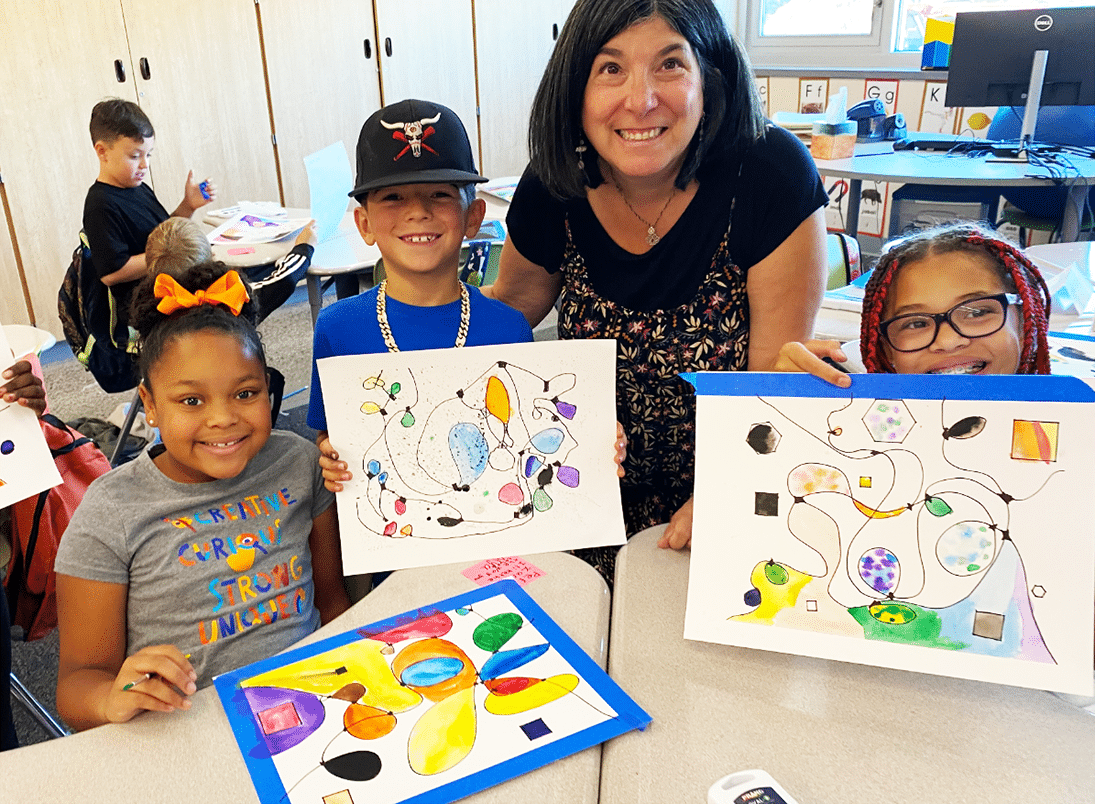
Santa Fe Opera News:
SANTA FE — Over the last 13 years, the Santa Fe Opera’s Active Learning Through Opera (ALTO) program – which supports elementary and middle-school students in making meaningful connections between an academic topic and an element of opera, and demonstrating that understanding through original performances – has expanded from its initial partnership with the Santa Fe, Albuquerque, Los Lunas and Rio Rancho public school systems, to numerous other schools throughout the state.
To date, ALTO has led more than 300 arts-integrated, multi-session residencies in over 30 schools across five New Mexico school districts and almost 250 Professional Learning workshops for NM educators. In the 2023-24 school year, 10 ALTO teaching artists will lead over 100 five-session residencies, engaging 1,500+ students.
Santa Fe Opera Director of School Programs Charles Gamble, anticipates a similar level of impact in the 2024-25 school year.
“The arts are like a special sauce that can help New Mexico kids see that school is for them,” Gamble said.
Cristina González, Fine Arts Coordinator of the Santa Fe Public Schools writes, “The ALTO program is the only district-supported professional development program for arts integration that is open to all K-12 teachers across SFPS. With the backdrop of an ever-changing and always-challenging educational landscape, the ALTO program closes teaching and learning gaps in Santa Fe. Teachers and students leave inspired and connected to learning.”
Arts integration is an approach to teaching in which students learn about and use an art form, including dance, music, theater, poetry, and visual and media arts, to engage in a creative process that connects the art form and a concept from the academic curriculum and meets evolving objectives in both.
The Santa Fe Opera is humbled to be the recipient of a $1 million grant from #startsmall, Jack Dorsey’s philanthropic initiative, to support ALTO. This grant, along with contributions from longtime, loyal supporters of ALTO, including The Hankins Foundation, Daniel D. Cameron, Jr., and Carol Prins and John H. Hart, allows the Santa Fe Opera to reach rural and tribal schools and enrich the education of New Mexico’s children through arts integration.
The History of ALTO
ALTO began in 1993 as a student-produced opera program, sending teaching artists to collaborate with teachers and students statewide to create, rehearse and perform original operas. Students engaged with an evolving spiral of challenges fueled by the delight of crafting an original story and sharing that story with families and students from other schools. This foundational model remains an integral component of ALTO. ALTO has since worked with 2,500+ students on 180+ student-produced opera projects across New Mexico.
In 2010, ALTO entered a formal alliance with public school districts in Albuquerque, Santa Fe, Rio Rancho and Los Lunas to foster arts-integrated teaching in all four districts. In 2012, the Kennedy Center’s prestigious Partners in Education program, which helps arts organizations develop and expand educational partnerships with local school districts, accepted the Santa Fe Opera as the first and only opera company to participate. In 2013 and 2014, the President’s Committee on the Arts and the Humanities recognized ALTO as one of the 50 most exceptional learning programs for young people in the arts and humanities.
During the pandemic, ALTO worked remotely with students at 10 schools in Rio Rancho and Albuquerque, writing, rehearsing and recording original pieces. The work movingly expressed the anxieties and resilience of these young artists. With new research in neurobiology and education informing changes to best practices, ALTO continues to evolve.
In 2023, multi-session residencies empower students to create original work that demonstrates their understanding – everything from learning about resonance and sound frequencies while building musical instruments from recycled materials to dancing the water cycle to dramatizing the convergence of cultures in the Rio Grande Valley. In addition to working directly with students most in need of support, ALTO leads professional learning for educators, administrators and teaching artists supporting them with restorative artistic practice and accessible research-based professional development to boost classroom engagement through the arts.
To learn more, listen to an interview with Charles Gamble and the Director of the Young Voices Program, Amy Owens on the Destination Santa Fe Opera podcast: https://takenote-sfo.libsyn.com/life-skills-music-making-and-billy-bad-the-billionaire-youth-opera-programs-with-amy-owens-and-charles-gamble
The Santa Fe Opera remains grateful to those whose generous contributions make the ALTO program possible:
The Hankins Foundation, Principal Education Sponsor
#StartSmall
Daniel D. Cameron, Jr.
Carol Prins & John H. Hart
About The Santa Fe Opera
The Santa Fe Opera annually draws 85,000 people from New Mexico and around the globe. Nestled atop a mountain vista in northern New Mexico, the company’s iconic Crosby Theatre is open on three sides, allowing visitors to enjoy performances complemented by the elements. Since 1957, the company has presented over 2,000 performances of 179 operas by 91 composers spanning five centuries of opera, creating a legacy of 45 American premieres and 18 world premieres. In November 2022, the company was recognized as “Festival of the Year” at the International Opera Awards.
Diversity, Equity, Inclusion and Accessibility at the Santa Fe Opera
Opera has the power to speak truth, broaden perspectives and invite empathy. The Santa Fe Opera is committed to the continuous work of becoming an antiracist and anti-oppressive organization and incorporating the principles of equity, diversity, inclusion and accessibility. Our goal is to create a joyful and engaging environment in which a diverse community of artists, staff, volunteers and audiences alike belong.
Mission
The mission of the Santa Fe Opera is to advance the operatic art form by presenting ensemble performances of the highest quality in a unique setting with a varied repertory of new, rarely performed, and standard works; to ensure the excellence of opera’s future through apprentice programs for singers, technicians, and arts administrators; and to foster an understanding and appreciation of opera among a diverse public.